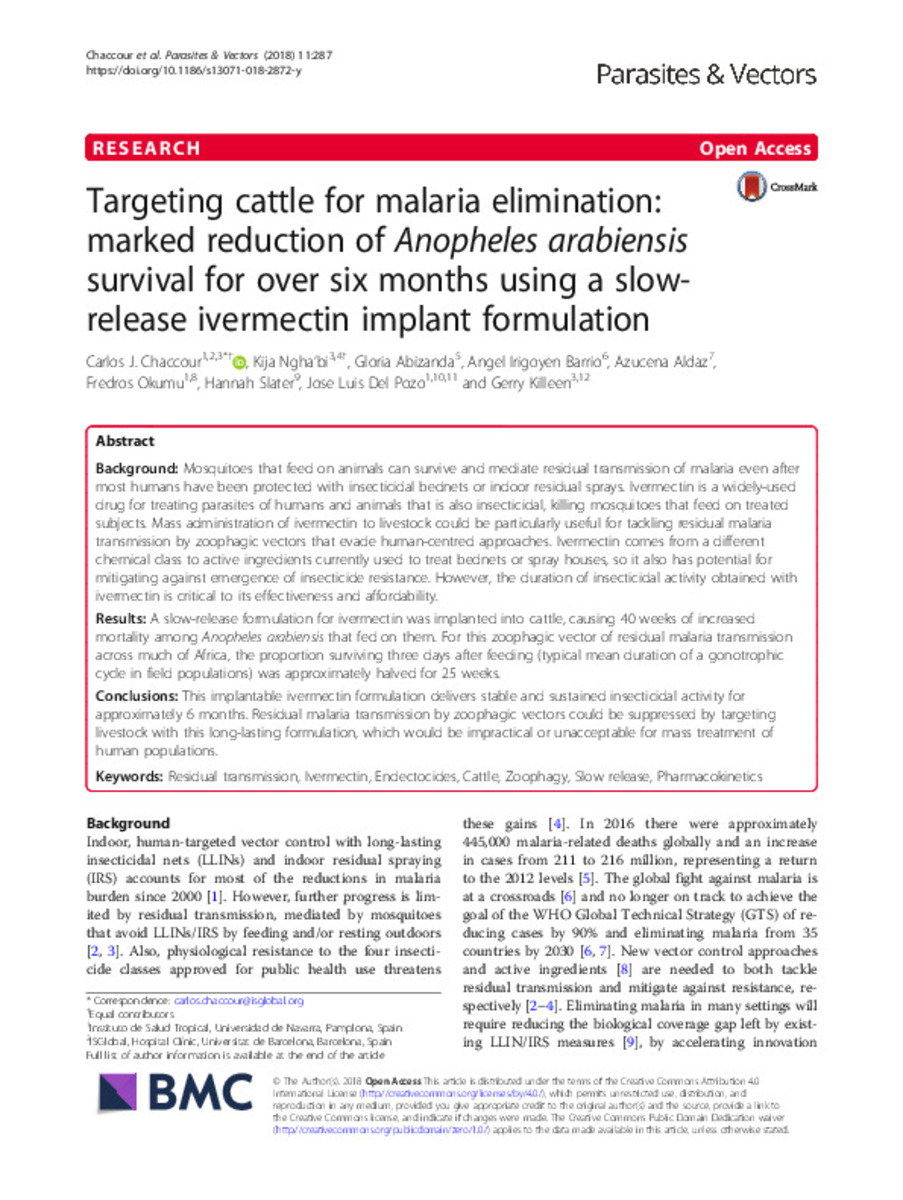Targeting cattle for malaria elimination: marked reduction of Anopheles arabiensis survival for over six months using a slow-release ivermectin implant formulation
Palabras clave :
Residual transmission
Ivermectin
Endectocides
Cattle
Zoophagy
Slow release
Pharmacokinetics
Fecha de publicación :
2018
Editorial :
BioMed Central
Nota:
This article is distributed under the terms of the Creative Commons Attribution 4.0
International License (http://creativecommons.org/licenses/by/4.0/), which permits unrestricted use, distribution, and
reproduction in any medium, provided you give appropriate credit to the original author(s) and the source, provide a link to
the Creative Commons license, and indicate if changes were made. The Creative Commons Public Domain Dedication waiver
(http://creativecommons.org/publicdomain/zero/1.0/) applies to the data made available in this article, unless otherwise stated
Cita:
Chaccour, C.J. (Carlos J.); Ngha'bi, K. (Kija); Abizanda, G. (Gloria); et al. "Targeting cattle for malaria elimination: marked reduction of Anopheles arabiensis survival for over six months using a slow-release ivermectin implant formulation". Parasites and vectors. 11, 2018, 287
Aparece en las colecciones:
Estadísticas e impacto
0 citas en

Los ítems de Dadun están protegidos por copyright, con todos los derechos reservados, a menos que se indique lo contrario.








